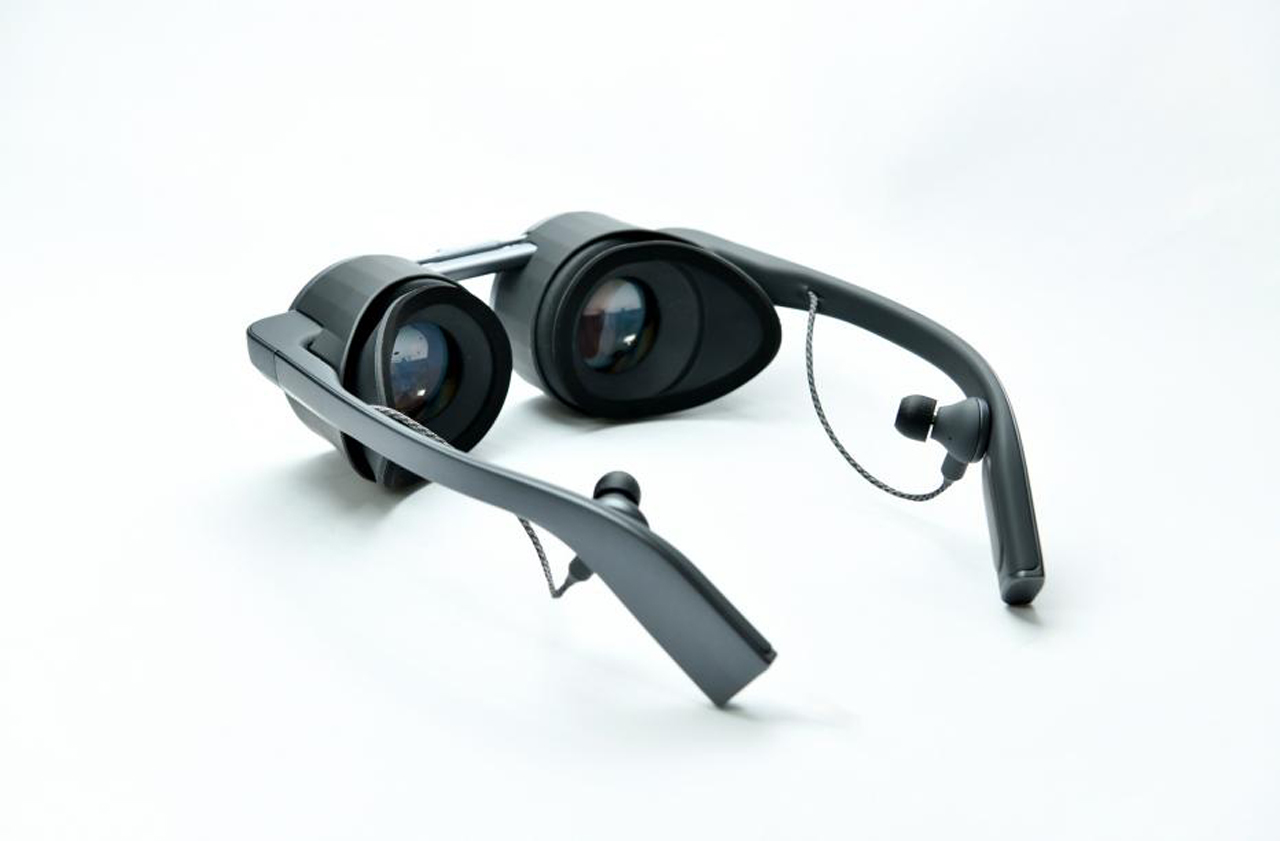Instead of the traditional headset design, Panasonic’s VR eyeglasses look very much like Steampunk goggles, where the frame consists of two individual protruding lens covers that are divided by a bridge. Instead of wearing them with a headband strapped around your head, the eyeglasses can simply be worn by placing the attached temples over your ears. You know, like actual eyeglasses or sunglasses.
According to Panasonic, the VR eyeglasses are expected to deliver high dynamic range and ultra high definition visuals, combined with the company’s well-known audio quality. The glasses will incorporate micro-OLED panels developed by Panasonic and Kopin Corporation, as well as optical technologies also used in their LUMIX digital cameras. Audio-wise, the company will use their Technics hi-fi audio technology on the VR eyeglasses’ earbuds attachments. Connectivity-wise, Panasonic aims to utilise a wireless approach in order to eliminate the need for cables, as well as providing more freedom of movement to the user. The company has expressed their interest in gearing the device up for forthcoming full-scale commercial 5G services and will further develop the VR glasses to be compatible with a variety of applications.
The Panasonic VR eyeglasses recently made a debut at CES 2020, but only as a non-functioning prototype. Tech media such as The Verge and TechRadar have reported that the company did provide a working sample for demonstration, but remarked that it was an experimental unit and its performance was still far from perfect. Granted, the device and its technology is in its development stages after all. Aside from the announcement of the VR eyeglasses’ development, Panasonic did not reveal any plans for the device’s release in the market. Having a VR experience in a smaller form factor is undeniably a better alternative to existing headsets, but we may have to wait a while longer until the technology is fully ready for consumer use. (Source: Panasonic.)

